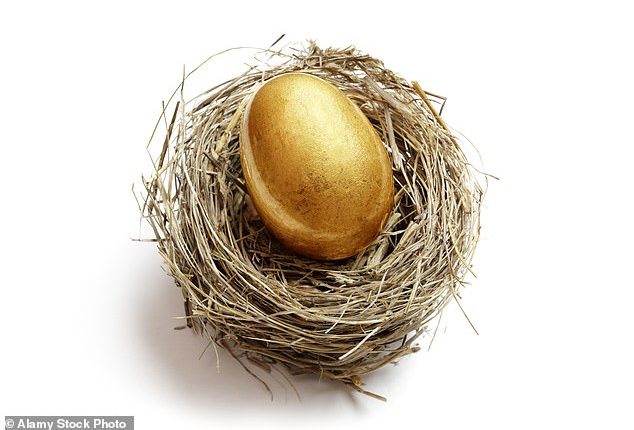
While the Isa is a good place to grow a nest egg, used the right way, it can also be used to generate a tax-free income to supplement a salary or pension.
This can be done by withdrawing the interest you earn in a cash Isa and using it as regular income.
But to improve your chances of generating a higher income long-term, stocks and shares Isas are a good bet. These allow you to invest in funds, investment trusts and individual company shares.
The key is to focus on investments that aim to provide a regular income in the form of dividends.
Some people also invest in assets they believe have the potential for strong growth and take profits from time to time as a form of income.

Tax-free income: You can use an Isa to supplement a salary or pension by withdrawing the interest you earn in a cash Isa and using it as regular income
Funds and investment trusts that pay an income usually do so quarterly, but some pay monthly, semi-annually or annually.
Here, experts reveal how to set up your investments so you can turbo-charge earnings and take a £10,000 tax-free income each year.
Build up a reliable income
Generating a substantial income from your Isa doesn’t happen overnight. But thanks to the powers of compound interest, it may take less time than you think.
You would need around £225,000 in your Isa to achieve a tax-free income of £10,000 a year, according to calculations from investment platform Interactive Investor.
If your investments grew by 5 per cent a year, you would need to put in £1,450 a month, or £17,400 a year, over ten years.
If you were able to pay in the full Isa allowance of £20,000, you could amass £225,000 in seven and a half years (assuming you make no other withdrawals).
Choose your funds wisely
To decide if a fund is a good pick for generating an income, you will want to look at its yield — the amount of cash it pays out relative to the cost of the fund.
For a £225,000 Isa pot to produce £10,000 a year of income, you will need to be targeting a 4.55 per cent return for your overall portfolio.
Murray Investment Trust, which has a dividend yield of 4.66 per cent, is an income investment pick named by Philippa Maffioli at Blyth-Richmond Investment Managers.
She says that the trust, whose holdings include analytics group RELX and drugmaker AstraZeneca, is trading on an 11 per cent discount, which means it is cheap relative to its current price, and has the prospect for growth as well as income.
Artemis Income, yielding just over 4 per cent, is a good pick according to Kate Marshall, investment analyst at Hargreaves Lansdown. This is a UK-focused fund, with RELX and venture capitalists 3i among its top holdings.
Rob Burgeman, at wealth manager Brewin Dolphin, names the Merchants Trust, yielding over 5 per cent.
This is one of the 20 trusts that has increased its dividend every year for 20 years and has pharmaceutical group GSK and oil and gas firm Shell among its top holdings.
When building a portfolio for income, it is worth investing across a range of assets to spread risk.
It may be tempting to simply pick a few firms that have produced the highest yields in the past but there is no guarantee they will continue to achieve a similar performance.
Opt for assets you believe stand a high chance of producing a good income both now and in future.

Interest: You would need around £225,000 in your Isa to achieve a tax-free income of £10,000 a year, according to calculations from investment platform Interactive Investor
Look out for ‘Inc’ funds
Funds tend to be offered as two versions — ‘Acc’ or ‘Inc’. You will see these abbreviations written after the name of a fund in your portfolio or on investing platforms.
‘Acc’ is short for ‘Accumulation’ and ‘Inc’ for ‘Income’. If you want the yield from your fund to be paid out to you as income, go for the Inc version of the fund. If you want the income to be reinvested to buy more of the same fund, go for Acc.
An accumulation fund is better for building up your portfolio, but an income fund will pay you cash ready to spend if you choose.
‘My Isa pays all my bills’
MIichael Taylor, 33, uses his Isa allowance to provide him with tax-free income. The writer and consultant, from London, uses his full yearly allowance to build up a portfolio of individual company shares.
He has amassed a seven-figure sum and now has enough to withdraw money regularly tax-free.
Michael, who says he can now spend more time with wife Nora and son Linus, one, says: ‘I used to work in an office, which I didn’t like much. Although I now work at weekends, I have more freedom.’
Michael’s strategy, which he writes about on his blog, shifting shares.com, is to trade in smaller UK firms.
He acknowledges that this is risky and not for everyone, but says that no matter how you invest, using your Isa allowance is useful for ensuring that any earnings you make are tax-free.








